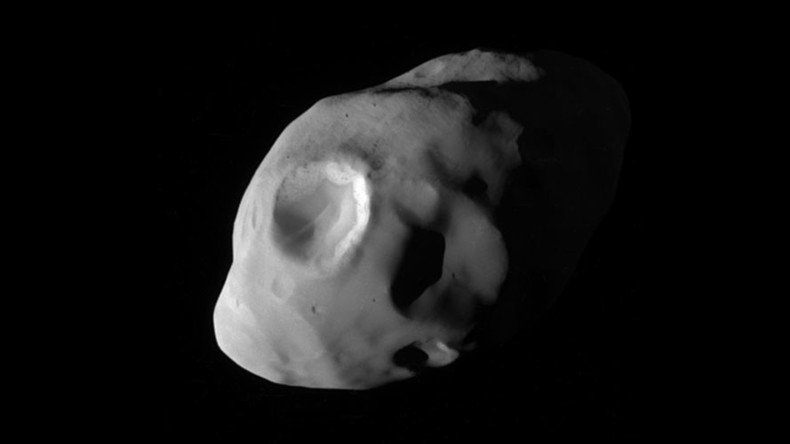Saturn’s moon Pandora captured up close by NASA’s Cassini spacecraft (PHOTO)

NASA’s Cassini spacecraft has captured the highest ever resolution image taken of Pandora, a heavily cratered moon that orbits Saturn.
Cassini captured the image during its third dive past Saturn’s F ring, the outermost of the planet’s visible rings.
From our new Ring-Grazing orbit, we've captured some of the highest-resolution views ever of Saturn's moon Pandora https://t.co/UoG2LwYprCpic.twitter.com/DQXchDtcyy
— CassiniSaturn (@CassiniSaturn) December 21, 2016
In a statement released by NASA, the agency said the image was taken in green light by Cassini’s narrow-angle camera. Pandora, which measures 84 kilometres (52 miles) in diameter, can be clearly seen covered in large craters.
The moon’s orbit around Saturn is believed to be chaotic, with other moons disrupting its path and debris creating impact craters on its icy surface.
Cassini is set to complete 20 dives in total past Saturn’s F ring. Earlier this month it produced detailed images of the planet’s hexagon-shaped jet stream located at its north pole. The feature has proved difficult for scientists to understand due to its uniqueness.
NASA Cassini spacecraft snaps ‘intriguing’ Saturn jet stream https://t.co/QLKN85poLIpic.twitter.com/u5hjFTFMwY
— RT (@RT_com) December 7, 2016
Prometheus, another moon of Saturn, was also captured by the NASA craft.
Space potato: NASA image of Saturn moon after Cassini close fly-by https://t.co/T8mFjOWoQqpic.twitter.com/VtS0NUMADd
— RT (@RT_com) December 9, 2015
Each orbit around Saturn takes Cassini one week. Its mission will come to a historic end in April, when the spacecraft ventures closer to the planet than ever before, as it plunges into its atmosphere, sending back as much information as possible until its signal is lost.
NASA’s Cassini makes first plunge to orbit Saturn’s rings https://t.co/MMAGFxwVUcpic.twitter.com/BvoaiiI1ft
— RT (@RT_com) December 6, 2016












